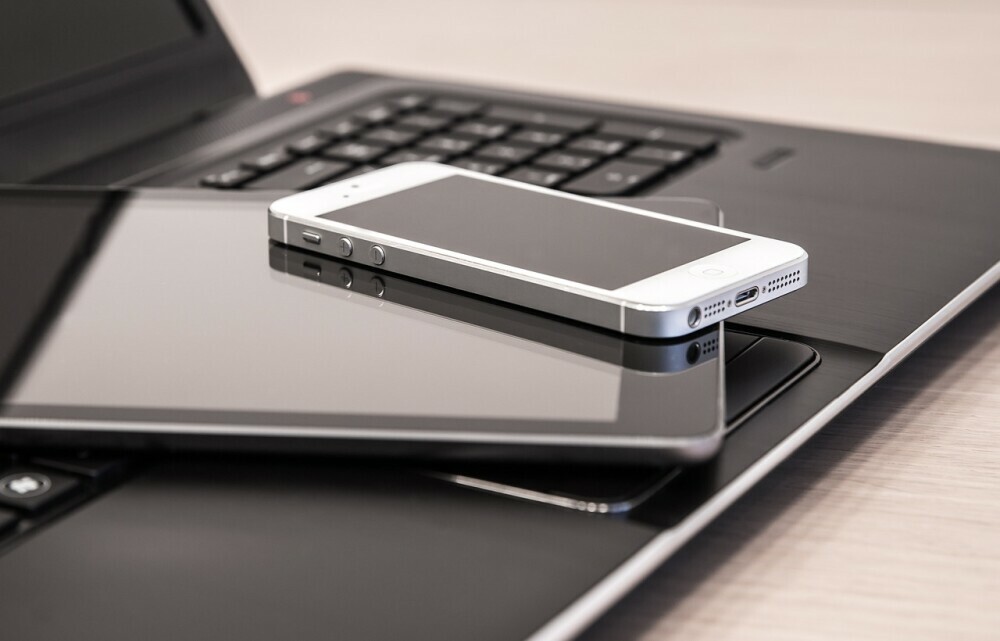Break Your Addiction to Electronic Devices: Effective Strategies to Regain Control
Are you feeling overwhelmed by the constant use of electronic devices? You’re not alone. Many people find themselves tethered to their cell phones, tablets, and computers, unable to break free from their grip. When you break your addiction to electronic devices it will improve your focus, reduce stress, and help you regain control of your time.

To start, it’s important to assess how much time you spend on your devices and identify which ones are the most distracting. Creating a digital detox plan can be the first step in cutting down screen time. This can involve setting specific rules for device use, like no screens during meals or limiting social media to certain hours of the day.
Making small behavioral changes can make a big difference. Consider replacing screen time with other activities you enjoy, such as reading a book, going for a walk, or spending time with friends and family. By maintaining a balanced lifestyle, you’ll find it easier to manage your electronic device use and enjoy the benefits of a more mindful, present life.
Key Takeaways
- Recognize the impact of electronic device addiction on your life.
- Develop a plan to reduce screen time and stick to it.
- Implement sustainable changes to maintain a healthy balance.
Understanding Electronic Device Addiction
Electronic device addiction can impact your mental health, everyday activities, and relationships. Knowing what it is, how it affects you, and recognizing the signs can help you manage it better.
Defining the Addiction
Electronic device addiction refers to the excessive use of gadgets like smartphones, tablets, and computers to the point where it interferes with daily life. It is similar to substance abuse in that it can create a dependency. You might find it hard to control your use, even if it’s causing problems in your work, school, or family life. Tolerance and withdrawal symptoms are key parts of this issue.
Psychological Impact
Overuse of electronic devices can lead to changes in your mood and behavior. You might feel anxious or depressed when you’re not using a device, and constantly checking your phone can increase stress levels. Some research suggests that frequent digital media use is linked to mental health issues like depression and anxiety. Sleep problems and reduced attention span are also common psychological effects.
Recognizing Symptoms
Being aware of the symptoms is crucial. Common signs of electronic device addiction include:
- Loss of control: Inability to limit screen time.
- Mood changes: Feeling happy during use and irritable without it.
- Tolerance: Needing to use it more over time.
- Neglecting Responsibilities: Ignoring work, school, or relationships.
- Withdrawal: Feeling anxious, angry, or restless when not using them (source).
Recognizing these signs early can help you take steps to reduce your screen time.
Assessing Personal Use
Understanding your relationship with electronic devices begins by examining how much time you spend on them and recognizing the moments that prompt you to use these devices.
Tracking Screen Time
To gauge your device use, start by tracking your screen time. Many smartphones and computers have built-in tools to help. For example, iPhones and Androids offer weekly screen time reports that show your total usage, the time spent on specific apps, and the number of pickups.
Use these reports to identify patterns. Do you notice spikes in usage during certain times of day or week? Record these details in a journal or a simple spreadsheet. This will give you a clearer picture of your habits.
Setting screen time limits can also be helpful. Tools like Apple’s Screen Time or Google’s Digital Wellbeing allow you to set daily limits for specific apps or categories. Stick to these limits to help manage your use. Monitoring and controlling your screen time will put you in a better position to understand your device dependency.
Identifying Triggers
Identifying what prompts you to use your devices is another critical step. Certain emotions or situations may lead to increased device use. Do you reach for your phone when you’re bored, stressed, or anxious? Do you find yourself scrolling through social media during work breaks or before bed?
Write down these triggers as you notice them. Create a list with columns for the trigger, the device or app used, and the duration of use. This will help you recognize patterns and understand the underlying causes of your device use.
Once you’ve identified these triggers, find alternative activities to replace device use. For example, if you scroll through your phone when bored, try reading a book or going for a walk instead. Recognizing and avoiding triggers will reduce unnecessary screen time and help break the cycle of addiction.
Understanding your screen time and identifying your triggers are essential steps in managing your device use effectively.
Creating a Digital Detox Plan

A successful digital detox plan requires clear goals and firm boundaries. Focus on setting achievable targets and establishing rules to reduce screen time and enhance real-life interactions.
Setting Achievable Goals
Start by defining what you want to achieve with your digital detox. Do you want to spend less time on social media or reduce overall screen time? Be specific about your objectives. For instance, aim to cut down your smartphone use by 30 minutes each day.
Track your current screen time to understand your habits. Use apps that monitor your device usage to set a benchmark. Knowing where you stand helps in creating realistic goals that you can gradually increase over time.
Write down your goals and keep them visible. This constant reminder will help you stay committed. Remember, the aim is to reduce dependency on devices, not to eliminate them completely. Begin with small steps and gradually work towards more significant milestones.
Celebrate your progress, no matter how small. Reward yourself when you hit your goals to stay motivated. The journey to breaking digital addiction is incremental, so patience is key.
Establishing Boundaries to Help Break your Addiction to Electronic Devices
Draw clear boundaries to manage your technology use. For example, designate tech-free zones such as bedrooms or dining areas. This helps create a physical separation between you and your devices.
Set specific times of the day to unplug from technology. You might choose to avoid devices during meals or an hour before bedtime. Creating these routines can make it easier to stick to your detox plan.
Inform friends and family about your digital detox. This helps them understand your absence online and encourages them to support your efforts. They might even join you, making the process less isolating.
Use tools like app limiters and notification blockers to minimize distractions. These tools can automatically restrict your device usage, making it simpler to follow your boundaries.
By implementing these strategies, you take control of your digital habits and create a more balanced lifestyle.
Implementing Behavioral Changes
Breaking free from an addiction to electronic devices requires adopting new habits and setting boundaries. By incorporating alternative activities and reducing temptations, you can create a balanced relationship with technology.
Incorporating Alternative Activities
To lessen your reliance on electronic devices, shift your focus to engaging activities. Physical exercise, such as walking, running, or biking, not only benefits your body but also your mind. Joining a sports team or a fitness class can provide social interaction and structure.
Reading books or engaging in hobbies like painting, cooking, or gardening can offer fulfillment and relaxation. Spending quality time with family and friends without screens fosters deeper connections and satisfaction.
Reducing Temptations to Help Break Your Addiction to Electronic Devices
Reducing temptations involves creating an environment that discourages excessive use of electronics. Set specific times for device use and stick to them. Turn off notifications for non-essential apps to minimize distractions.
Allocate “tech-free” zones in your home, like the dining room and bedroom, to avoid automatic screen time. Use apps or built-in features on your devices to monitor and limit usage.
By these means, you can take control of your habits, reduce reliance on devices, and pave the way for a more balanced lifestyle.
Maintaining a Balanced Lifestyle
Striking a balance between digital and non-digital activities is key to leading a fulfilling life. Here’s how you can nurture offline interests and stay mindful.
Prioritizing Non-Digital Interests
To keep a healthy balance, it is essential to engage in activities that don’t involve screens. Focus on hobbies like reading physical books, drawing, or playing a musical instrument. These activities can be both relaxing and stimulating.
Spending time outdoors is also beneficial. Activities such as hiking, gardening, or simply going for a walk help you connect with nature and reduce stress. Participation in sports or joining community groups can provide social interaction and a sense of belonging.
Setting specific times to unplug from your devices allows you to fully invest in these interests. Creating a schedule helps ensure that you make time for non-digital activities.
Practicing Mindfulness to Help Break Your Addiction to Electronic Devices
Being mindful means staying present in the moment and being aware of your surroundings. Practicing mindfulness can reduce the urge to check your devices constantly.
Start by setting aside a few minutes each day for mindfulness exercises like deep breathing, meditation, or yoga. These practices can help center your thoughts and provide mental clarity.
During meals, focus on the experience of eating without distractions. Savor the flavors and textures of your food. Implementing mindful eating can improve your relationship with food and enhance digestion.
Additionally, mindfulness can be integrated into daily routines. When walking, pay attention to each step and the sensations around you. This practice helps ground you in the present and reduces digital dependence.
By dedicating time to mindfulness, you enhance your overall well-being and cultivate a healthier relationship with technology.
Frequently Asked Questions
Managing your screen time and maintaining a balanced relationship with technology can challenge many, but it’s important for your health and well-being. Effective strategies, signs of addiction, and suggested tools can help you in achieving this balance.
What are effective strategies for reducing screen time?
Set clear boundaries for device usage. Create a schedule that includes specific times when you will not use electronics. Use timers to remind you to take breaks. Engaging in hobbies, exercising, and spending time with loved ones can also help reduce your screen time.
How can one establish a balanced relationship with technology?
Prioritize real-life interactions over digital ones. Make an effort to engage in conversations and activities without your phone. Establish tech-free zones in your home, such as the dining table or bedroom, to limit distractions. Consistently follow your rules to maintain a healthy balance.
What are the signs that indicate an addiction to electronic devices?
Some signs include spending most of your free time on devices, feeling anxious or irritable when not using them, and neglecting work, school, or relationships. If you frequently lose track of time while using digital devices and suffer negative consequences, these might also indicate an addiction.
Can you suggest any tools or apps that help manage device usage?
Apps like Screen Time for iOS and Digital Wellbeing for Android help monitor and limit usage. Forest and StayFocusd can also help you stay productive by blocking distracting websites or encouraging you to stay off your phone. Using these tools can help you gain control over your screen time.
What activities can replace the time spent on electronic devices?
Engage in physical activities such as running, swimming, or joining a sports team. Take up hobbies like reading, painting, or cooking. Spend time with friends and family, explore nature, or volunteer in your community. These activities can provide fulfillment and reduce your dependency on digital devices.
How does one maintain focus on tasks without digital distractions?
Set specific goals and follow a structured routine to stay focused. Use techniques like the Pomodoro Method, which involves working for 25 minutes followed by a 5-minute break. Keep your work area free from digital devices and disable notifications to minimize interruptions.

